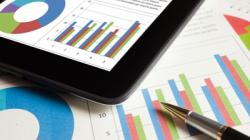While FP&A professionals work in a field of numbers, language is a critical component of our profession. Far too often there is loose use of terminology in corporate finance.
Inside this article are the bread and butter ratios of statement analysis. Some gauge effective use of assets. Some report the financial condition of the company. It is with these the ratios (relationships) where it all begins. What I am outlying here the very core of corporate finance statement analysis.
For organizations with annual expense budgets, it is important to have procedures for monitoring expenditures and budget items throughout the year. This article visually describes how to use statistical forecasting models, uncertainty ranges and space forecasting models for this purpose.
Considering forecasting as an exercise to assess future financial performance as accurately as possible through a bottom-up approach based on actual facts, it appears necessary for an Organisation to become conscious of its own culture.
Many businesses have yet to discover the full benefits of evolving their planning process to include complete and accurate rolling forecasts. With so many external factors that affect the bottom line for these businesses creating rolling forecasts is a sound way to ensure strategic decisions are made.
As most forecasting methods require data, a forecaster analyzes the availability of data from both external and internal sources. The availability of external data is improving rapidly. With the explosion of Internet websites, potential sources of valuable data are becoming limitless. With unstructured data, the need for data mining tools has become a necessity for exploring potential sources of data for consumer analyses and predictive modelling purposes.
Pagination
Subscribe to
FP&A Trends Digest

We will regularly update you on the latest trends and developments in FP&A. Take the opportunity to have articles written by finance thought leaders delivered directly to your inbox; watch compelling webinars; connect with like-minded professionals; and become a part of our global community.





